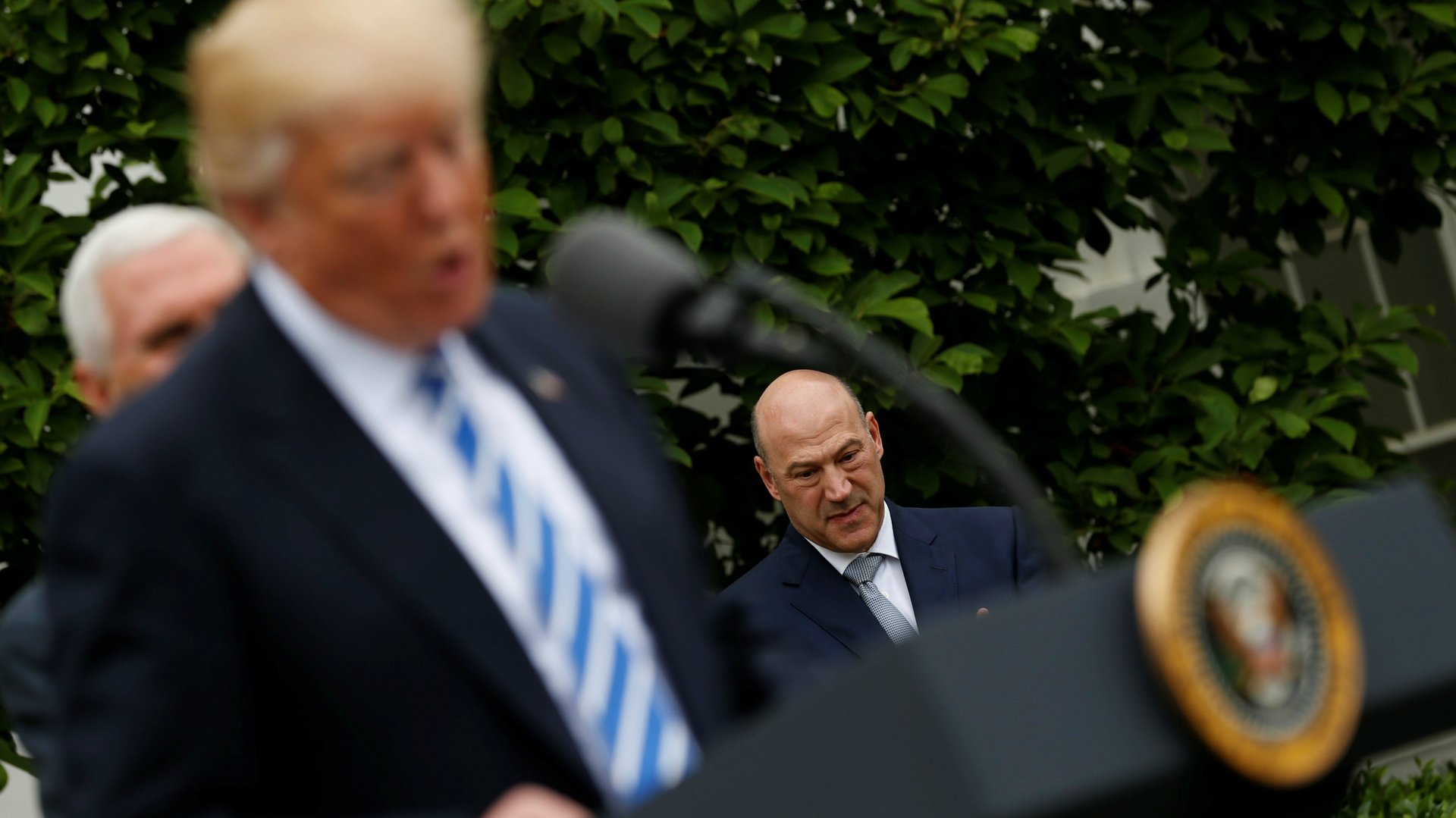Trump wanted to print money to repay the national debt. That’s bananas
Donald Trump has made his ignorance of Economics 101 abundantly clear—from his late-night phone calls to ask how the dollar works to his constant confusion over the cause of the US trade imbalance. Bob Woodward just added another striking episode to the list.


Donald Trump has made his ignorance of Economics 101 abundantly clear—from his late-night phone calls to ask how the dollar works to his constant confusion over the cause of the US trade imbalance. Bob Woodward just added another striking episode to the list.
The latest tidbit comes from Fear: Trump in the White House, the renowned investigative journalist’s book on the internal struggles of the Trump administration. According to CNBC, Woodward reports the following exchange between Trump and Gary Cohn, the former director of the National Economic Council, while discussing the national debt:
Trump: “Just run the presses—print money.”
Cohn: “You don’t get to do it that way. We have huge deficits and they matter. The government doesn’t keep a balance sheet like that.”
Cohn, writes Woodward, was “astounded at Trump’s lack of basic understanding.” The president has accused Woodward of fabricating quotes. But while Cohn has said the book “does not accurately portray” his experience of the White House, he hasn’t denied that any specific exchanges took place, as Axios notes.
So why is Trump’s suggestion a big deal? Throughout his 2016 presidential campaign, Trump vowed to slash US national debt and balance the federal budget. Not only has he failed to do so—his exchange with Cohn suggests he doesn’t even understand how national debt works.
Normally, when a government spends more than it earns in taxes and other revenue, it has to borrow from the public to cover those expenditures, running a budget deficit. When it repeatedly earns less in revenue than it spends, annual deficits keep snowballing into the national debt. The US has now racked up more than $21 trillion in debt.
The obvious way for the government to get out from under that mammoth debt is consistently to bring in more in revenue than it spends.
Trump, according to Woodward’s account, proposes another alternative: print your way out of it. What Trump was probably suggesting was to directly fund federal spending with money the government itself creates.
It’s certainly possible to do this—in theory, at least. Back in the old days of the gold standard, the government could only issue as much currency as it held in gold. But since the global breakdown of the gold standard in the 1970s, there’s nothing backing most currencies anymore—which means there’s no clear limit on how much money governments can issue. So, sure, if a country wants to spend more than it earns, its treasury could indeed fire up the mints and crank out crisp new bills to pay off those old debts (or, more accurately, it could create the cash electronically). The US could, say, pay wages for federal workers or buy new missiles from a contractor in a few keystrokes—by simply adding a credit to those accounts.
Printing money is often associated with the horrors of hyperinflation that has laid waste to economies by ravaging people’s spending power. Think wheelbarrows of cash in Weimar Germany, or postwar Hungary, when prices doubled every 15 hours (paywall)—or the 1,000,000% inflation rate Venezuela is on track to hit by the end of this year. The US would probably be safe from this kind of outcome, since hyperinflation almost always occurs in economies that have suffered huge disruptions, like emerging from a war or undergoing a regime change.
But inflation doesn’t have to be hyper to be destructive. As the growing supply of newly-minted money outstrips demand for it, its value erodes. That might not be such a huge concern in an economy suffering from weak demand. However, in an economy that’s at or nearing full capacity—as the US’s seems to be—an unruly uptick in inflation is much more likely.
To offset that inflation, interest rates would likely jump too, driving up borrowing costs. Right now the US government’s interest burden is relatively light. But sharply rising rates could up its debt servicing costs to punishing levels. And that could lead to sweeping cutbacks in spending on vital government services. The impact of rising rates on US household and business investment would compound the hit to growth. In other words, printing money to lower the national debt would probably make America’s debt problems—and its overall economy— much worse in the long term.
Excess money can also create dangerous bubbles, like those of the early 2000s. If it coincides with high unemployment, it can also lock an economy in the kind of stagflation that beset the US economy in the 1970s.
And so there’s a touch of irony in Trump’s proposed shortcut. Not only has the president failed to balance the budget, his massive tax cut and a huge spending bill threaten to push the budget deficit from $665 billion in 2017 to a whopping $1.3 trillion by 2022, according to the Congressional Budget Office (pdf, p.83). By 2028, the CBO says the deficit could rise to $29 trillion—which, as a share of GDP, would be twice the average over the last 50 years. No wonder the siren song of the printing press beckons.